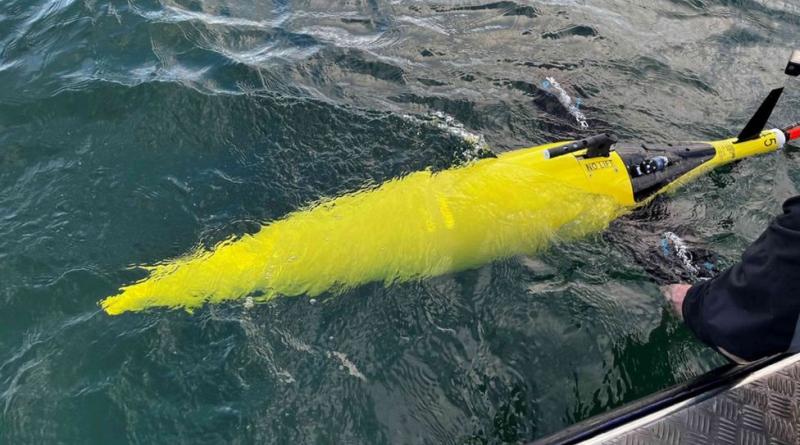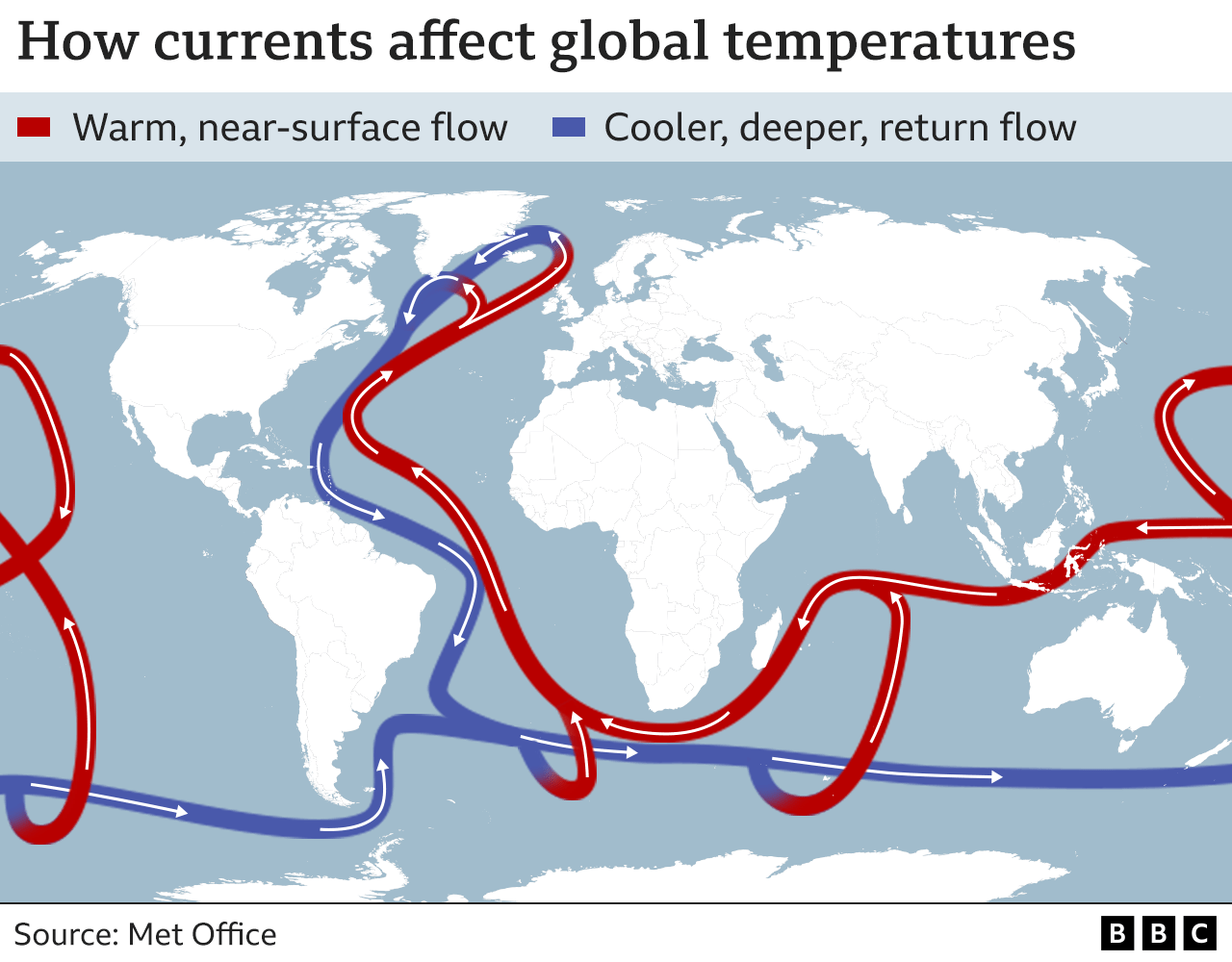Deep-diving robots checking for climate collapse in our oceans

Scientists in Scotland are using robotic subsea gliders to check ocean currents for signs of climate collapse.
They are monitoring the "conveyor belt" which carries warm and cool water between the Caribbean and the Arctic.
Scientists fear a weakening of the system would have a devastating effect across large parts of the planet.
The Scottish Association for Marine Science (Sams) at Oban is deploying the robots on autonomous missions between the UK and Iceland over five months.
Atlantic circulation is important for distributing tropical heat across the world and keeps northern Europe at a more temperate climate than other locations on the same latitude.

Its collapse is referred to as one of the climate "tipping points" and there is some research to suggest it might be very slowly weakening.
Because it fluctuates, experts say circulation needs to be monitored closely over several decades for any firm conclusions to be made about its strength.
Modelling suggests that although its collapse would be catastrophic, it's highly unlikely this would happen in the 21st Century.
The robotic gliders dive to depths of 1,000m (3,281 ft) gathering data about water temperature, oxygen and salt levels.
Each travels at a speed of half a mile an hour and resurfaces every five to six hours when communicating with the research team via satellite.
Oceanographer Helen Smith says the marine environment is incredibly understudied because most historical observations are confined to the area surrounding a ship at a single point in time, usually the summer.
Dr Smith adds: "We can send these out to measure water all year round in places that we couldn't get to."
The current system is called the Atlantic Meridional Overturning Circulation (Amoc) and has been measured and modelled since 2004.
As the warm water moves north it cools which increases the salt density causing it to sink into the deeper ocean.
That cooler water then flows southwards, completing the cycle.
The Met Office has warned that increases in polar ice melt, along with the warming climate, mean the system needs to be closely monitored.
Prof Mark Inall, an expert in physical oceanography at Sams, describes the heat in the North Atlantic as a vital part of the earth's climate system.
He added: "It transports huge quantities of heat from the tropics to the polar regions and a lot of that heat comes into the atmosphere which makes it a very vigorous, stormy place, particularly around the UK."
As well as monitoring the Amoc, the data gathered by gliders helps improve scientists' understanding of how the atmosphere is affected by changes in the ocean.
It also provides near real-time data for shorter term weather forecasting.
Other robotic technology being used includes an autonomous boat which uses sonar to collect ocean pressure data from sensors on the sea bed.




